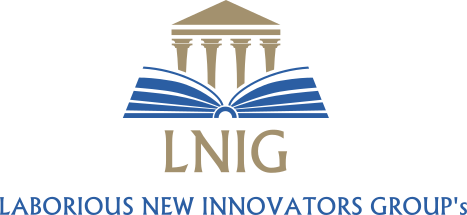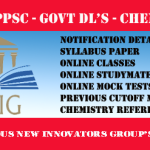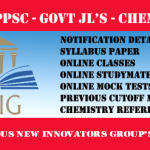Objective Statistical Thermodynamics by Chem Sparrow Publications
₹200.00
Title of the Book: Objective Chemical Thermodynamics.
Author(s): Team-Chem Sparrow Publications.
Book Edition: First
Year of Publication: 2025
Publications: Chem Sparrow Publications
No. of Pages: 64
ISBN Number: —
Book Language: English
Book Weight: — grams
Book Price: Rs. 200/-
Description
Objective Statistical Thermodynamics
Contents of the Book:
Unit-1: APSET Solved Objective Questions: 14 Solved Objective Statistical Thermodynamics Questions (2012–2021).
About the Book:
This book is the Eighth Objective Physical Chemistry Primer of the Chem Sparrow Chemistry Primers of Chem Sparrow Publications. This book is concerned with the Statistical Thermodynamics: Concepts of distribution and probability. Estimation of probability and the most probable distribution. Systems composed of noninteracting particles. Derivation of Boltzmann distribution law. The molecular partition function. Systems composed of interacting particles. The concept of ensemble and canonical ensemble. Canonical partition function and its relation to molecular partition function. The factorization of molecular partition function – translational, rotational, vibrational and electronic partition functions. Derivation of expressions for translational, rotational (diatomic) and vibrational partition functions. Relationship between partition functions and thermodynamic functions. The relationship between partition functions and thermodynamic functions. Specific heats of solids – Einstein equation of heat capacity of solids – derivation. Explanation of heat capacity at very low and very high temperatures – Dulong and Petits Law. Debye theory. The entropy of a monoatomic ideal gas. The Sackur-Tetrode equation derivation. Mean translational and vibrational energies. This textbook is a genuine attempt to provide sufficient information for the student to be able to attempt their end-semester and several competitive examinations. In this book totally we are covered 14 Solved Objective Statistical Thermodynamics Questions of various competitive examinations.
This book is designed from the basic level to the advanced level of Statistical Thermodynamics, and this book is particularly designed for all competitive examinations in India from IIT-JEE, and NEET examinations to CSIR-UGC-NET and GATE examinations. It will be useful for faculty and students and researchers. This book is useful for NEET, IIT-JEE, IIT-JAM, CSIR-UGC-NET, GATE, all state-level P.G. Entrance examinations, All State-level Eligibility Tests (SET Exams), All State-Level Research Eligibility Tests (RCETS) and All-Central-Level Public Service Commission Examinations (UPSC), All-State-Level Public Service Commission Examinations which are related to Chemistry.
The textbook is divided into one unit, the first unit covers APSET Chemical Sciences previous year solved objective questions. The way the subject matter is presented prevents students from memorizing by rote. In fact, the subject has been organized around the Statistical Thermodynamics: Brief review of concepts of I and II laws of thermodynamics; Concept of entropy – Entropy as a state function, Calculation of entropy changes in various processes, Entropy changes in an ideal gas, Entropy changes on mixing of ideal gases, Entropy as a function of V and T, Entropy as a function of P and T, Entropy change in isolated systems- Clausius inequality, Entropy change as criterion for spontaneity and equilibrium; Third law of thermodynamics, Evaluation of absolute entropies from heat capacity data for solids, liquids and gases. Standard entropies and entropy changes of chemical reactions. Helmholtz and Gibbs free energies (A and G). A and G as criteria for equilibrium and spontaneity. Physical significance of A and G. Driving force for chemical reactions- relative signs of ∆H and ∆S. Thermodynamic relations. Gibbs equations. Maxwell relations. Temperature dependence of G. Gibbs- Helmholtz equation. Pressure dependence of G. Chemical potential: Gibbs equations for non-equilibrium systems. Material equilibrium. Phase equilibium. Clapeyron equation and Clausius-Clapeyron equation. Conditions for equilibrium in a closed system. Chemical potential of ideal gases. Ideal-gas reaction equilibrium-derivation of equilibrium constant. Temperature dependence of equilibrium constant-the van’t Hoff equation. Solutions: Specifiying the Solution composition. Partial molar poperties-significance. Relation between solution volume and partial molar volume. Measurement of partial molar volumes- slope and intercept methods. The chemical potential. Variation of chemical potential with T and P. Gibbs-Duhem equation-derivation and significance Ideal solutions. Thermodynamic properties of ideal solutions. Mixing quantities. Vapour pressure-Raoult’s law. Thermodynamic properties of ideally dilute solutions. Vapour pressure- Henry’s law. Nonideal systems. Concept of fugacity, fugacity coefficeient. Determination of fugacity. Non ideal solutions. Activities and activity coefficients. Standard-state conventions for non ideal solutions. Determination of activity coefficients from vapour pressure measurements. Activity coefficients of nonvolatile solutes using Gibbs-Duhem equation. Multicomponent phase equilibrium: Vapour pressure lowering, freezing point depression and boiling point elevation. Students will quickly be able to predict much of what will happen after mastering these rules and principles. The text is well-illustrated with examples from the surrounding world to make the qualitative and quantitative components of the subject easier to understand.
The completion of this book has been possible with the valuable insights and critical feedback from several individuals, and we express our sincere gratitude to Team-Chem Sparrow for their invaluable contributions. Through this Objective Physical Chemistry primer, Chem Sparrow Publications continues its commitment to advancing the understanding of Objective Physical Chemistry. We hope this textbook not only aids in academic success but also inspires curiosity and innovation in the study of Chemical Thermodynamics.
BOOK PUBLISHED BY:
Chem Sparrow Publications
Flat No. 216, Oak Mont Apartment,
Horamavu, Bengaluru, Karnataka,
560043, India
BOOK MARKETED BY:
Laborious New Innovators Group’s
LNIG PUBLICATIONS, GUNTUR,
Contact Number: 91+ 8099871707.
Contact mail ID: [email protected]







Reviews
There are no reviews yet.